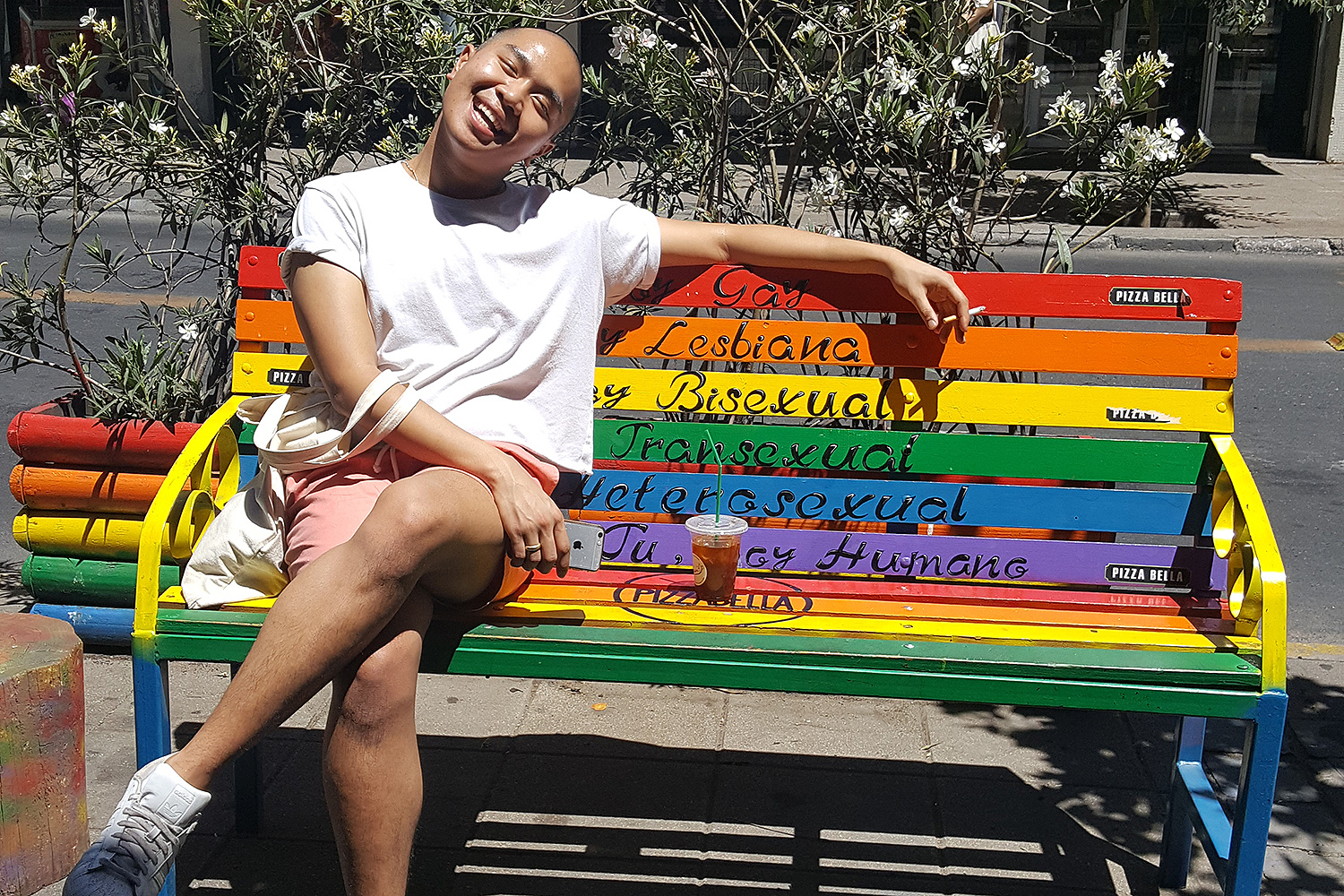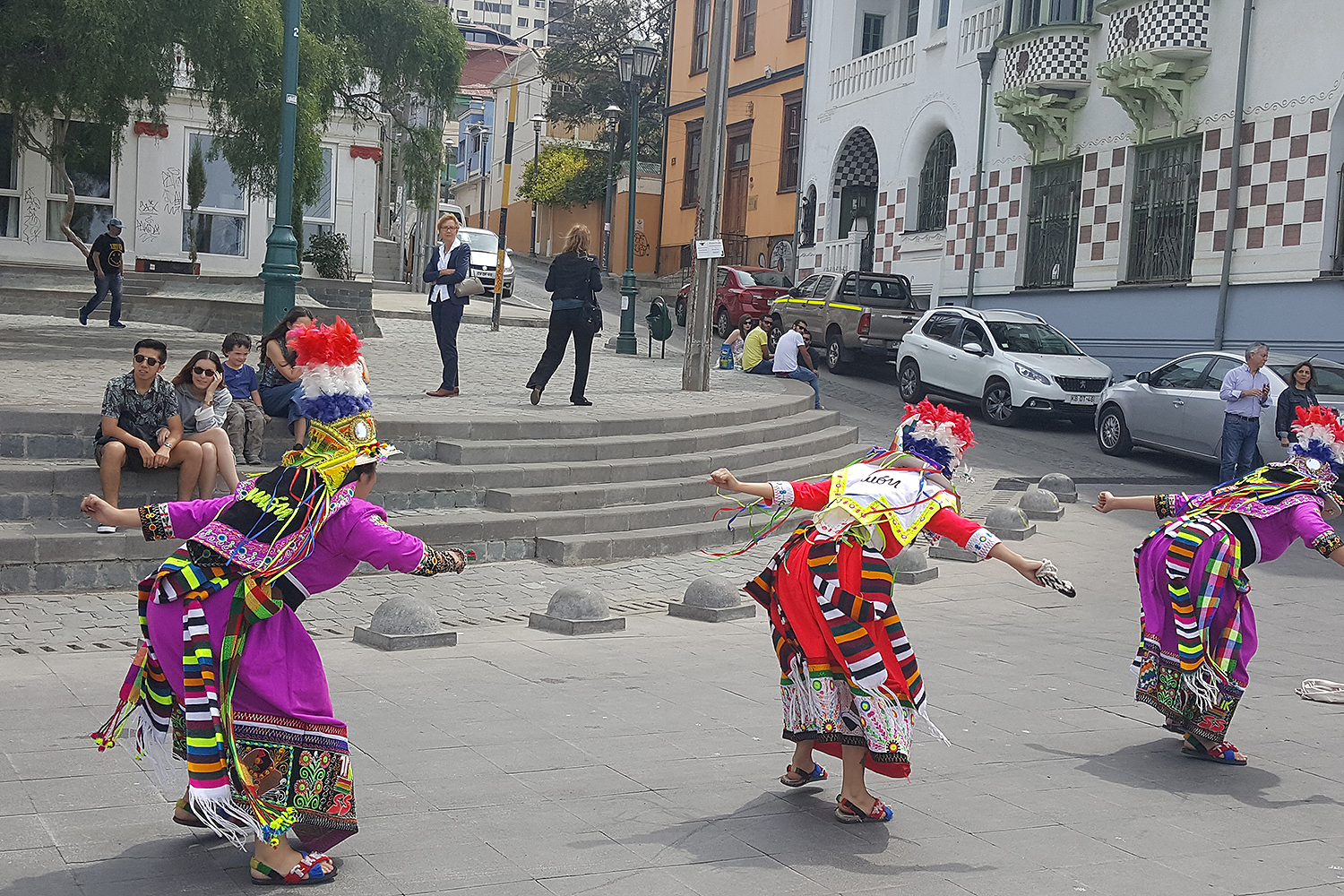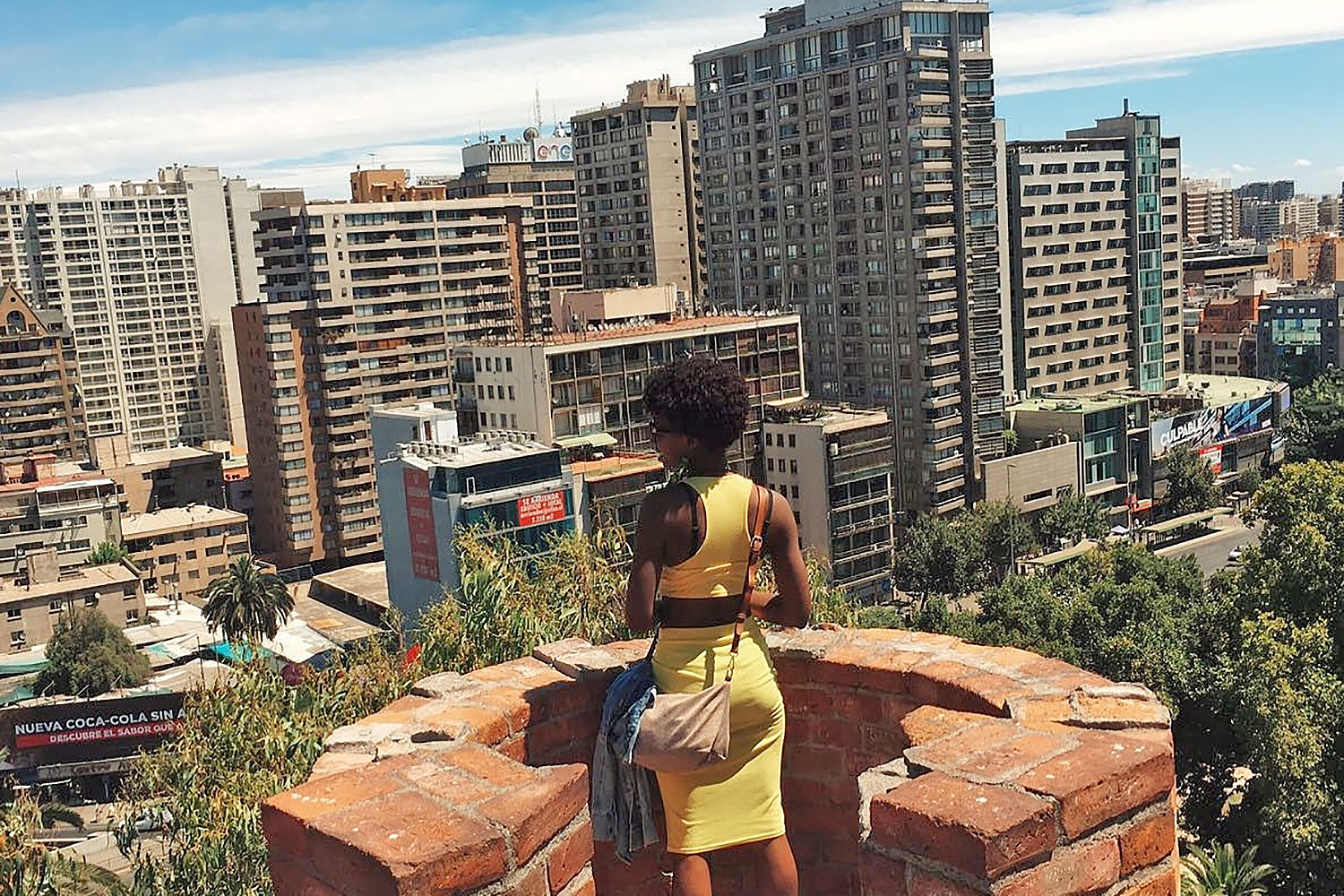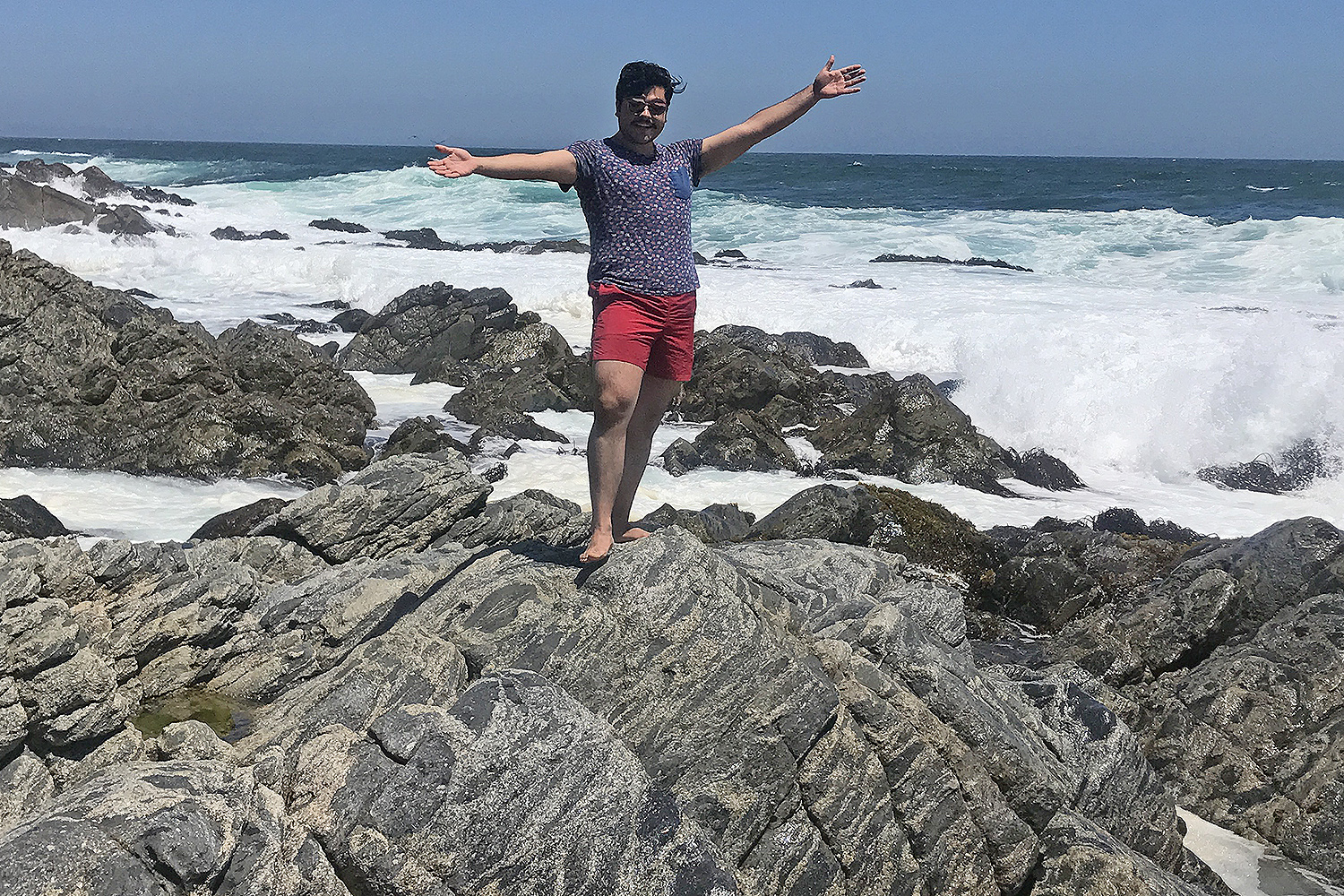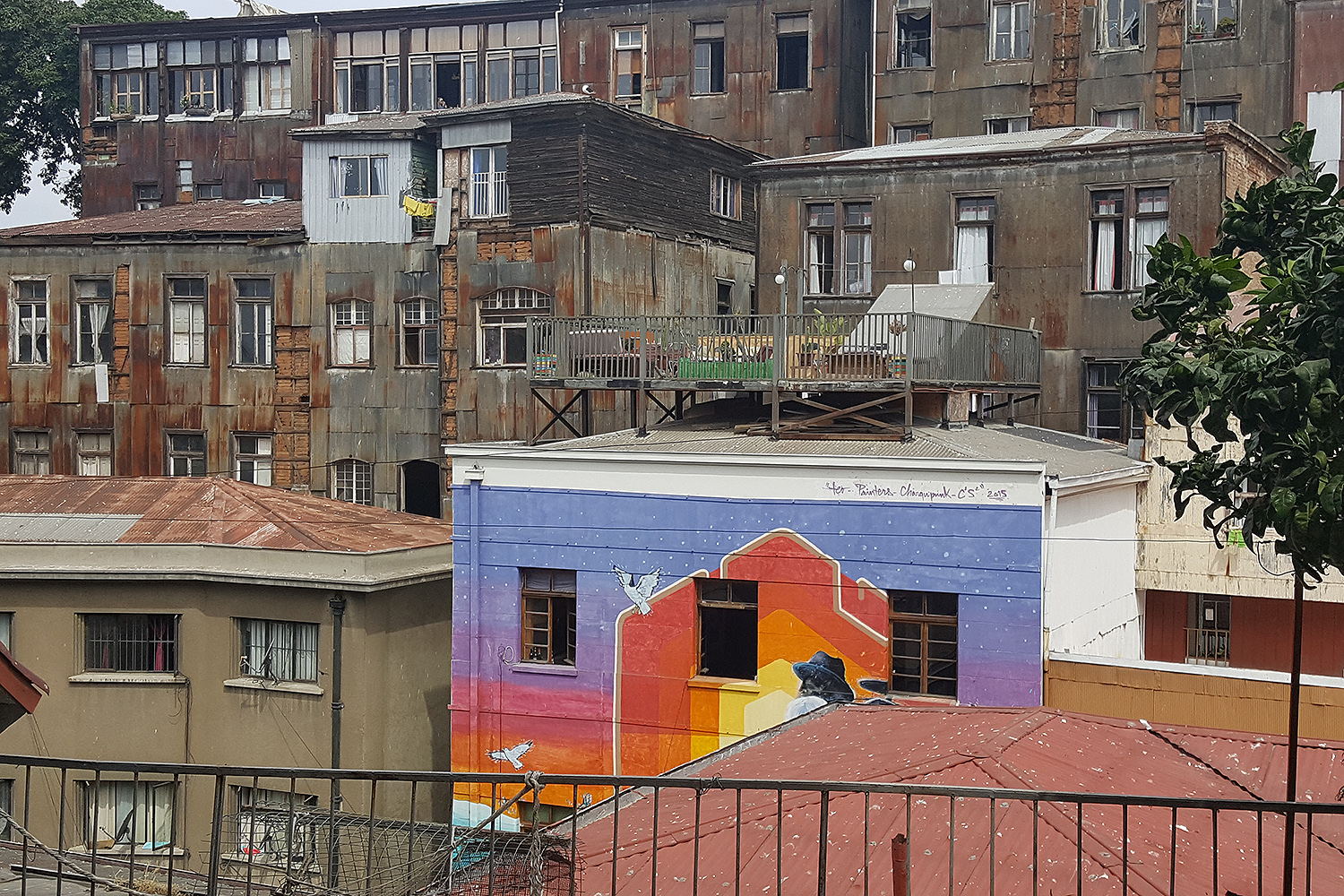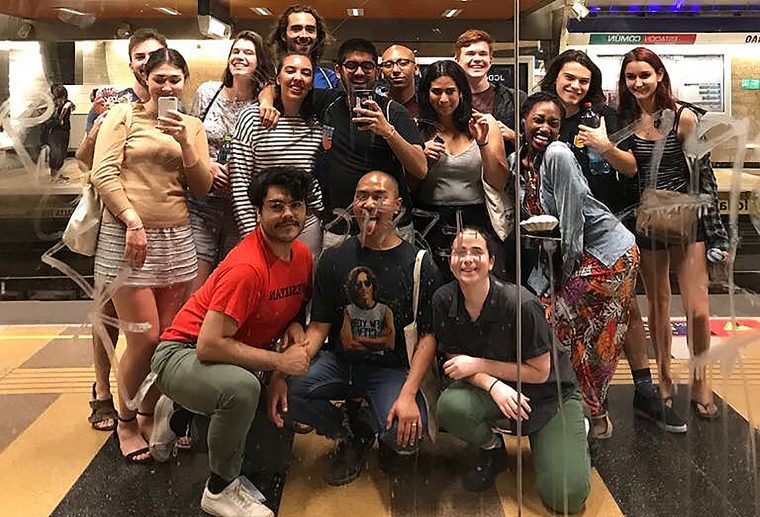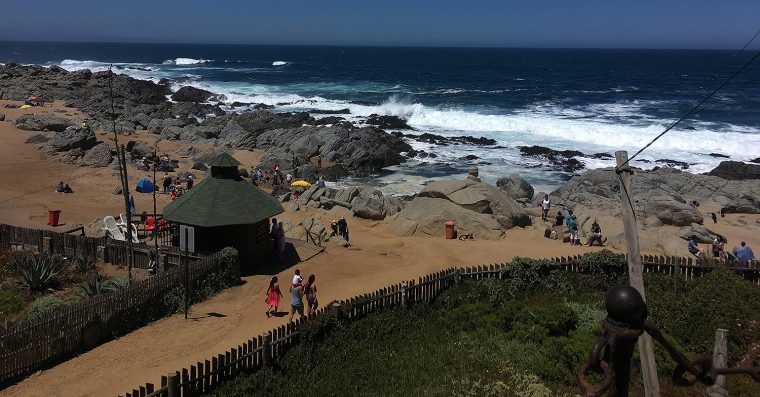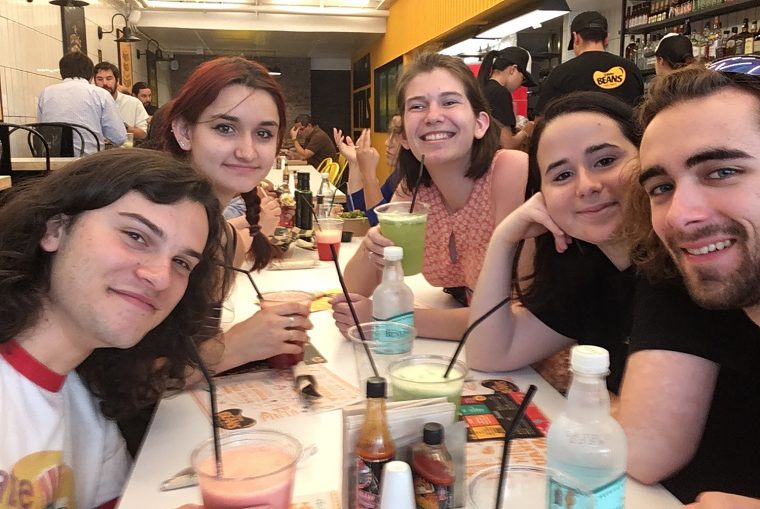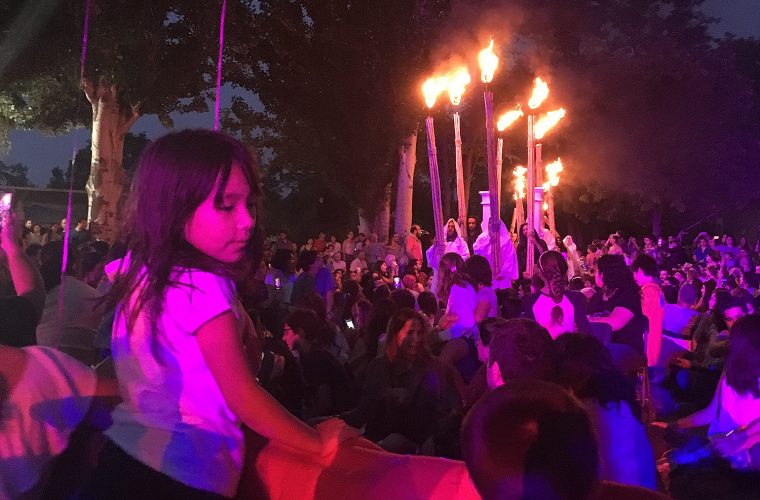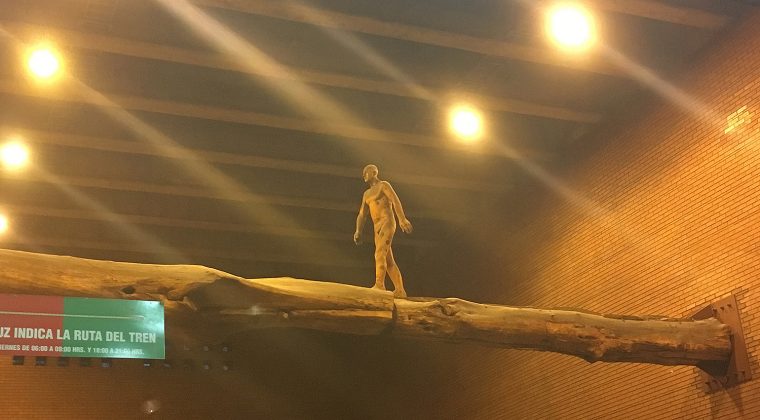Students Study Theater in Chile over Winter Session (with Photo Gallery)
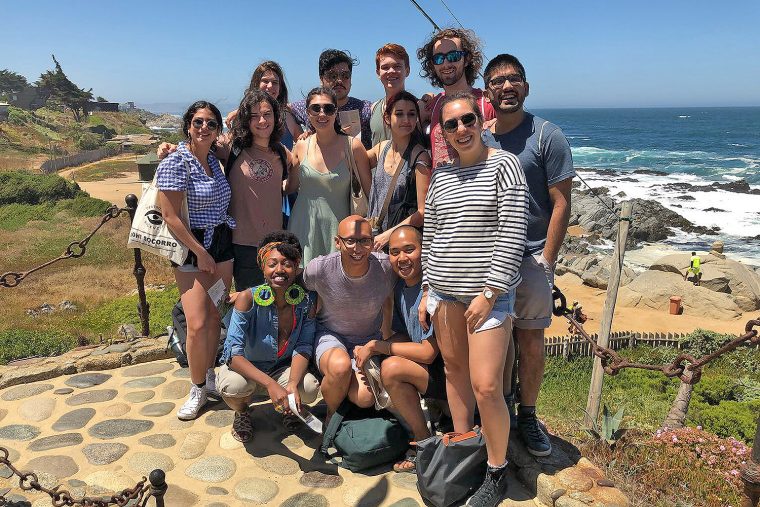
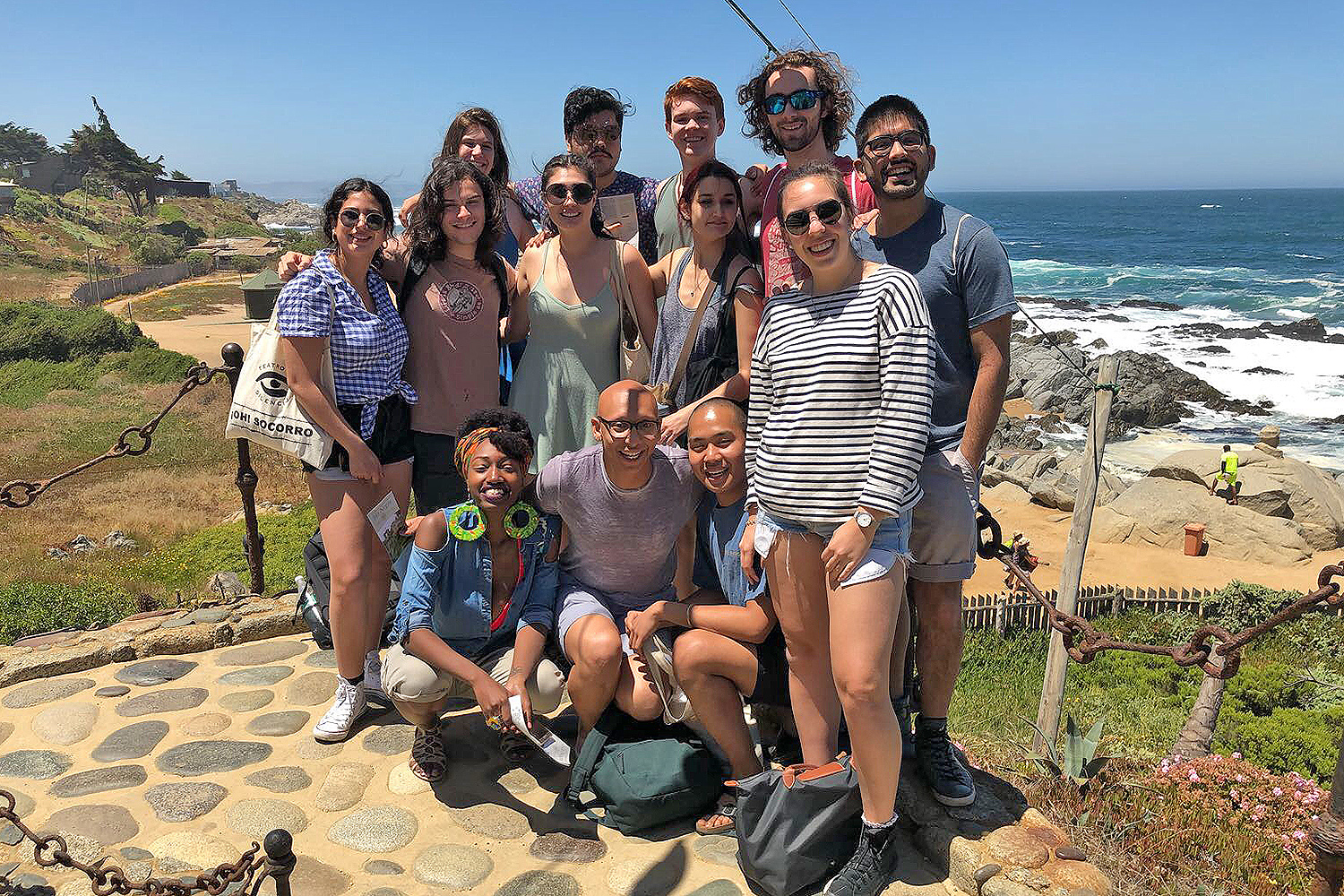
During Winter Session, 14 Wesleyan students studied live, site-based theater performances in Santiago, Chile.
The course, THEA 357: Space and Materiality, was taught by Marcela Oteíza, assistant professor of theater, and took place during the Festival Internacional Santiago a Mil (FITAM), the most renowned theater festival in Santiago. This was the first abroad course offered by Winter Session.
“It was a wonderful experience for students and myself; particularly, to be able to share in situ with them the social and cultural history of Santiago within the framework of the festival,” Oteíza said. “Students learned about performance and reception theories, while participating in the performances and activities that the festival had to offer.”
Twenty students applied for the two-week intensive course, of which Oteíza was able to take 14, including sophomores, juniors and seniors. Half were theater majors, but the group also included anthropology, English, Spanish, biology, mathematics and American studies majors.
Although some of the students spoke Spanish, knowing the language wasn’t a requirement. The group included both native speakers and those with no familiarity with the language.
Students adapted to the vigorous class schedule, meeting for three hours a day and attending performances together in the evening. The class studied site-specific performance, street performance and immersive theater in conjunction with scholarly readings and daily journal entries.
“The great thing about street performances is that they use different landmarks as their setting, which are the same landmarks that are used politically and socially and culturally,” Oteíza said, noting that the class observed a performance at La Moneda, the Chilean White House. “You have all these layers of understanding the social, political and cultural history of Santiago . . . and the performances meanings change when the space context changes and moves in and out from urban space to a performative stage.”
Sam Morreale ’19, a Wesleyan Quest Scholar double majoring in theater and the Science in Society Program, enjoyed that he was able to experience the Santiago a Mil festival similarly to the people of Chile.
“The Winter Session Abroad program was a phenomenal experience for me! I have not been abroad before, and personally was unable to go abroad during the academic semester, so Marcela’s course was truly the perfect opportunity for me,” he said. “The class was a great mixture of intense theoretical concepts put into conversation with the plethora of performance we saw, and also cultural immersion. Marcela designed the course in a way that really brought Wesleyan’s value of both theory and practice into conversation with each other.”
By observing theater in another country, students learned that different cultures practice the discipline in different ways.
Government and theater double major Emma Johnson ’19 grew up in Switzerland and has already engaged with the European-based theater rather than American.
“The primary difference that I have noticed over the years, which was reinforced by the Santiago a Mil festival, is that American theater tends to be much more narrative-driven, whereas European theater companies seem much more at ease with more abstract conceptions of what a story or performance can be,” Johnson said. “European theater companies often break the mold, willing to challenge everyday audiences in terms of what they typically see, or conceive of theater. This difference in philosophy manifests itself in the way performances are staged.”
Morreale was most surprised by the capacity at which the festival was able to put on productions. “There was a huge variety of performance, from the traditional Western theater we know, to enormous puppet shows that moved through the streets, to full takeovers of a plaza for immersive performance. To be able to disrupt spaces the way that they did was not only entertaining, but so clearly had an impact on the community,” he said. “Every performance we saw was filled to capacity, and people were just so excited to enter whatever magical world they were being presented with.”
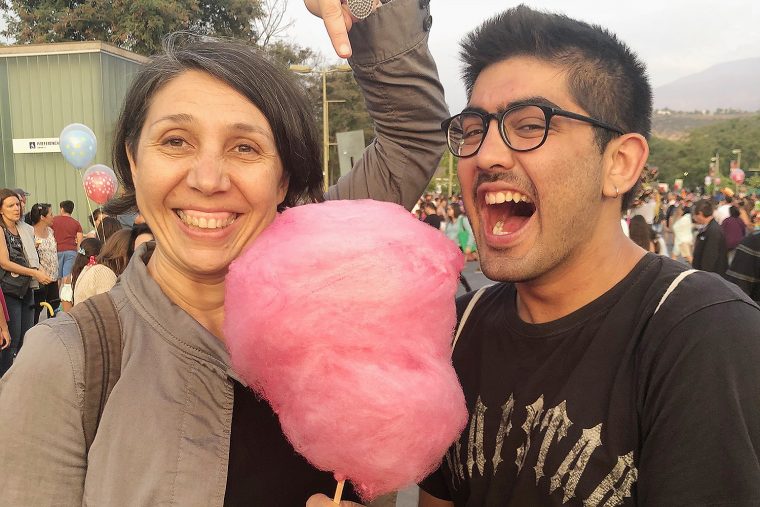
The performances also create a sense of community. On one occasion, giant fabricated gorillas swarmed the streets, chasing down pedestrians and festival-goers.
“They could’ve run over anybody! But nobody complained; the traffic was stopped. People came out and clapped and joined,” Oteíza said. “In New York, that wouldn’t have happened! In Chile, people come out and it just happens. There’s a sense of taking the streets and how performance can or cannot build community.”
While in Santiago, Oteíza screened her video documentary Santiago (en) Vivo at the Chilean Presidential Palace. The video follows the FITAM street performances, practitioners and audiences for five consecutive years and analyzes how and when the city of Santiago is transformed into a stage. Oteíza also participated in Labescenico, a research colloquium associated with the festival, talking about her recently published article that explores how street performances transform a city’s architecture and urban spaces.
Oteíza also held a Master Class about scenographic space design as part of the educational branch of Labescenico at the Centro Cultural Gabriela Mistral.
The travel course was supported by the Office of Study Abroad, the Fries Center for Global Studies and Academic Affairs. Students included Johnson, Morreale, Najwa Anasse ’18, Gabe Brosius ’20, Andrew Dalton ’20, Ryan Dobrin ’18, Emily Hilton ’18, Julia Middlebrook ’20, Rebecca Roff ’20, Alex Rothenberg ’20, Jose Luis Sanchez ’18, Naomi Williams ’19, Nick Yeager ’19 and Jejomar Ysit ’19.
“Being able to connect the performances to the academic material was a great learning advantage, and was unparalleled compared to what would have been the experience of this course on campus,” Johnson said. “Given that Marcela’s research is highly focused on that particular festival, she brought so much specific knowledge, which she would bring to the course wherever it was taught, but was heightened by actually being there, and being part of those performances.”
For some of the students, this was the first time that they traveled outside the United States, so the intercultural awareness “opened their eyes—not just about language and cultural differences, but also what it means to be displaced in the world today,” Oteíza said. “It’s not just about theater; this kind of experience helps them become citizens of the world. I hope that this kind of opportunity is available to our students and faculty again.”
Pictured below are several images contributed by the classmates:
